MIRAMAS, France – The car might be camouflaged, and we won’t be seeing it sans vinyl wrappings until May 24, but this is the first official drive of the 2024 BMW 5 Series. More specifically, the all-new, all-electric BMW i5. And it was a perfect sequence of driving, too: an hour to test the autonomous driving functions on the highway; then a spirited drive on back roads, followed by a hardcore handling circuit. I wrapped it up with a technological “deep dive” and a thorough discussion with some of the engineers behind the car.
The 2024 5 Series represents the eighth generation of a brand icon, also known as the G60. Still lightly camouflaged to disguise the details of the window frames, the head- and taillights and the cladding, the 5 Series cannot hide its sheer size. It will just crack the 5-meter barrier, which equals 16.4 feet and used to be the traditional marker of a European luxury car. In fact, it is longer than the beloved E38 7 Series of the 1990s. It has grown over the decades, just like its main competitors, the Mercedes-Benz E-Class and the Audi A6/A7.
While Mercedes-Benz is building entirely different cars for its gas-powered and fully electric powertrains, however, BMW is following its own path: The G60 range is designed to accommodate all powertrains. Fitted with diesel, gasoline and plug-in hybrid propulsion systems, the car will keep its traditional 5 Series nomenclature. The fully electric versions are called i5.
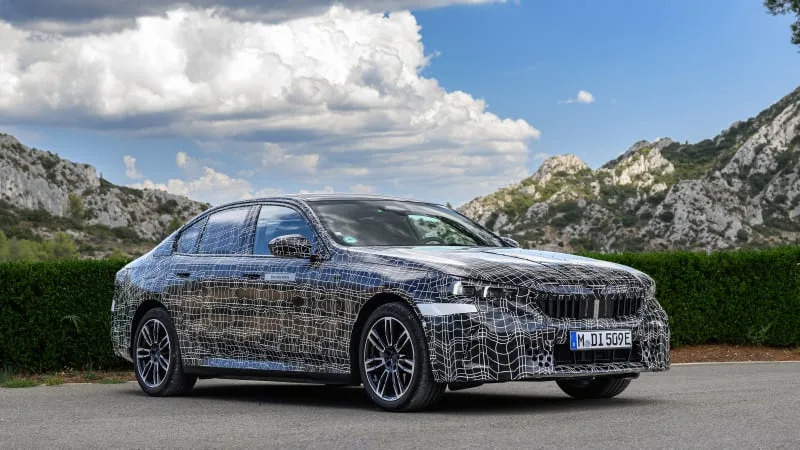
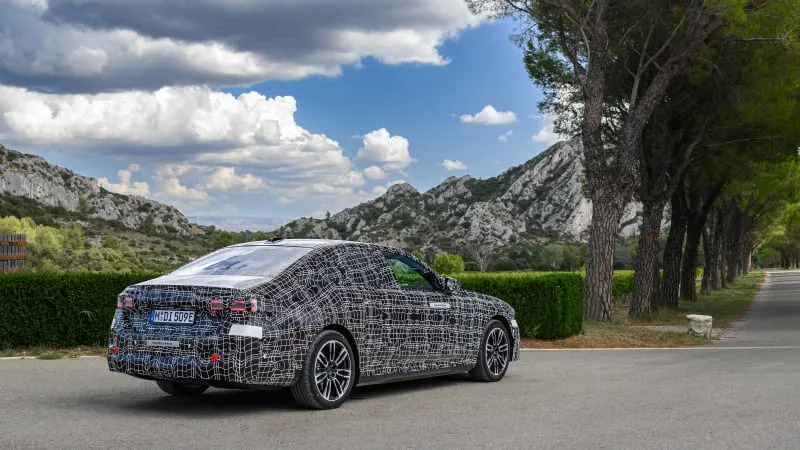
There are two versions of the i5, which I got to sample in different stints of that aforementioned sequence: The 335-horsepower i5 eDrive40 for the back road drive, and the all-wheel-drive, 590-horsepower i5 M60 xDrive for the handling course and the assistance system drive. BMW’s ability to engineer perfectly sporty, responsive and comfortable internal combustion cars is undisputed; they have served as industry benchmarks for decades. It’s the electric models that must really prove their worth.
As far as straight-line performance goes, there is no doubt they do. Even the entry-level eDrive40 takes off with a vengeance and serves up plenty of torque on the way to triple-digit velocities. The M60 model is downright furious. It never ran out of excessive power, and unless you plan to travel at autobahn speeds, the entry-level i5 is more than sufficient.
The i5 models are fitted with the same double-wishbone front and five-link rear axle architecture as the conventionally powered 5 Series, but there are extra stiffening plates up front, rear torsions struts and an active roll stabilization system at both ends. Rear axle air suspension is standard, too. Batteries are packed below the floor, inside the center tunnel and under the rear seats – a scattered positioning that keeps passengers as low in the car as possible with negligible loss of passenger space.
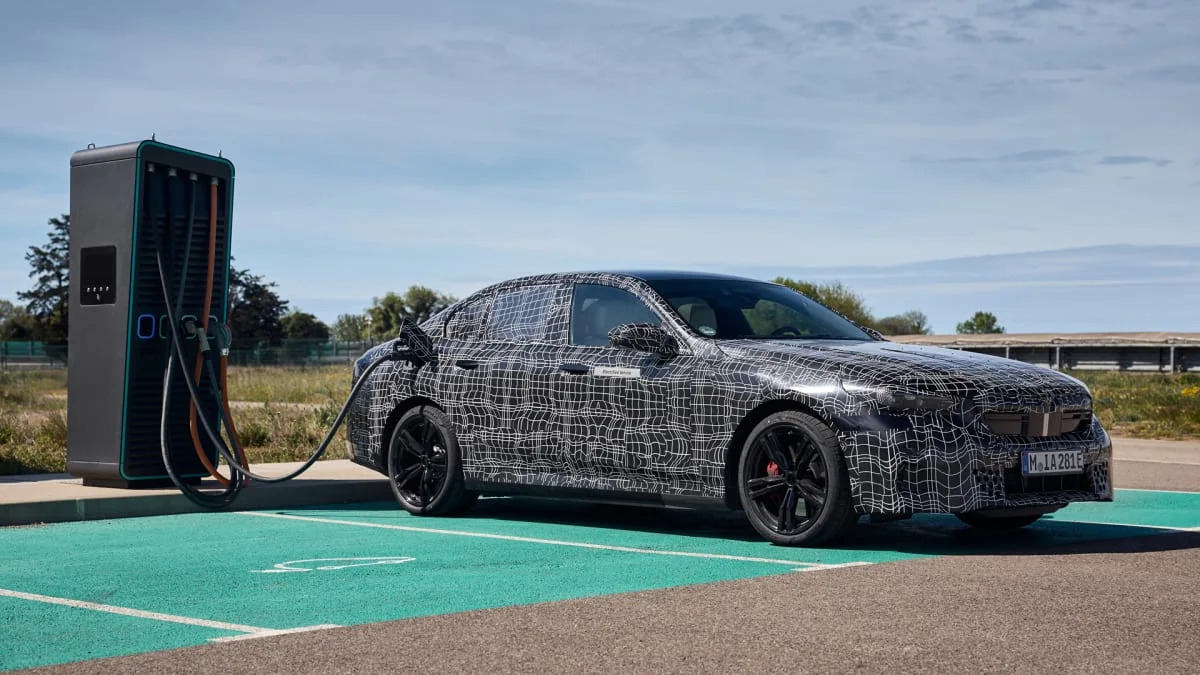
Wheel sizes on the regular 5 Series range from 18 to 21 inches, but the standard wheels and tires on the i5 are 245/40R 20 up front and 275/35R 20 in the rear. An optional rear-wheel-steering system makes the car more agile at low speeds and more stable during high-speed lane-change maneuvers. An ultra-quick “vehicle dynamic management” system that controls the dampers and active anti-roll system takes in a plethora of variables to make the 5 Series both sportier and more comfortable than before.
The results of this electronic effort can be felt immediately, both on the road and on the challenging handling track, where both i5 models could be flogged mercilessly without losing their composure. Potholes, slight jumps, rough surfaces: These cars handle the challenge with a greater ease than other electric vehicles, with the exception of much more expensive and sporty offerings such as the Porsche Taycan and its Audi E-Tron GT sibling. I liked the clearly noticeable spread between the comfort-oriented settings and the Sport setting, but each is extraordinarily competent.
As much fun as it is to drive these cars without noticeable intervention, they are well prepared for an increasingly autonomous future, even though they are still defined as “Level 2” models. Fed by optical and radar systems, the suite of driver assistance systems includes a supremely capable Highway Assistant that allows drivers to keep their hands off the steering wheel as long as they remain attentive – and the car makes sure they are. Lane changes are also automated, though it functions differently than those of other companies. When the car suggests a lane change, it’s sufficient for the driver to simply look in the desired direction, and the car will change lanes when it’s safe to do so. There is no manual or vocal input necessary. This industry first is a fascinating if slightly dystopian feature: It makes the car seem like it’s reading your mind.
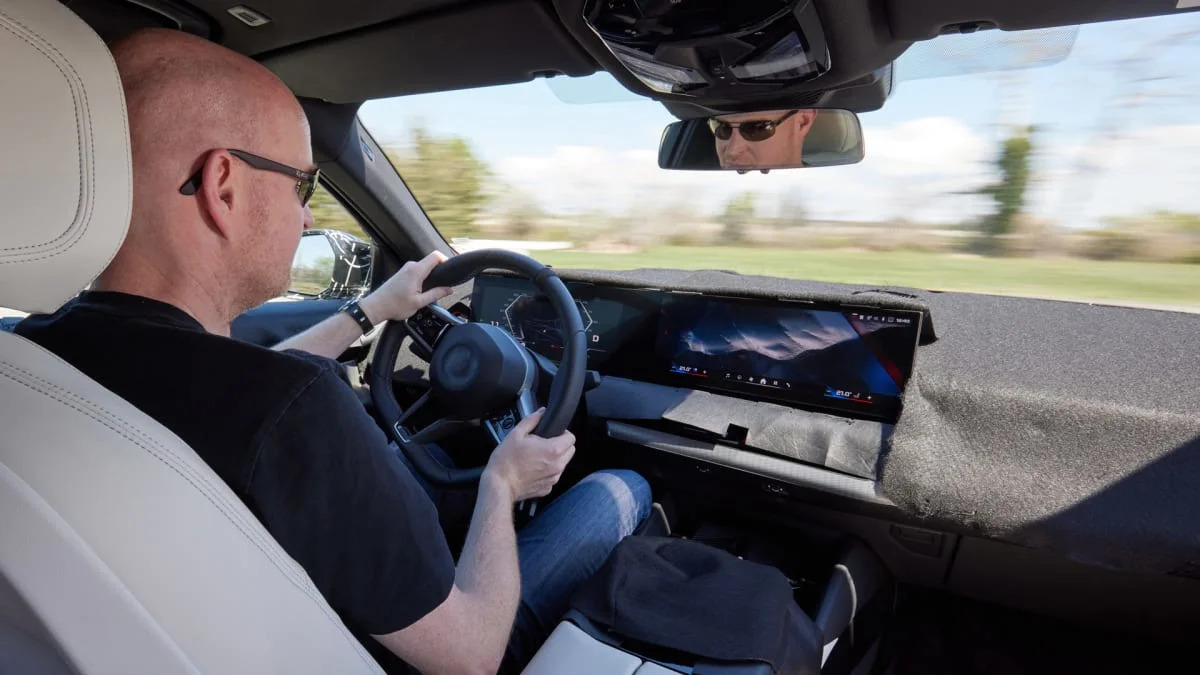
BMW won’t talk about the engines yet, but it’s safe to guess there will be a diesel versions for Europe, a four-cylinder 520d and a six-cylinder 540d, as well as four- and six-cylinder gasoline models that will arrive in North America. BMW will also offer a plug-in hybrid, and the M5 is likely to keep its V8. The regular series V8 is gone, its place being taken by the highest-powered i5. There should also be a 5 Series wagon, and rumors have swirled that some version of it will return to the United States, much as the Audi RS 6 Avant did.
The i5 eDrive 40 will reach just over 360 miles of range in the (very optimistic) European cycle, the i5 M60 xDrive will be rated at around 320 miles. That would likely put its EPA estimates in the upper 200 range, which is decent for an EV. A new “Max Range” mode squeezes considerable extra miles out of the batteries if needed, but it severely cuts into the power. It will eventually be rolled out to other BMW models, just like the latest assistance systems.
As far as design is concerned, all I can tell you is that the headlights get new, angled vertical daytime running lights, while the rear will be characterized by two parallel horizontal bars that unfortunately look a lot like the signature look created by Genesis, especially at night. Inside, there’s BMW’s new and ubiquitous curved display with edgy graphics for the speedometer. It’s a polarizing look that doesn’t come off as particularly BMW-like and makes it even more befuddling that BMW doesn’t offer more options for customization. It’s therefore reassuring that the rest of the car still looks, feels and drives like a 5 Series. It should arrived at dealers in the fall.
Related Video:
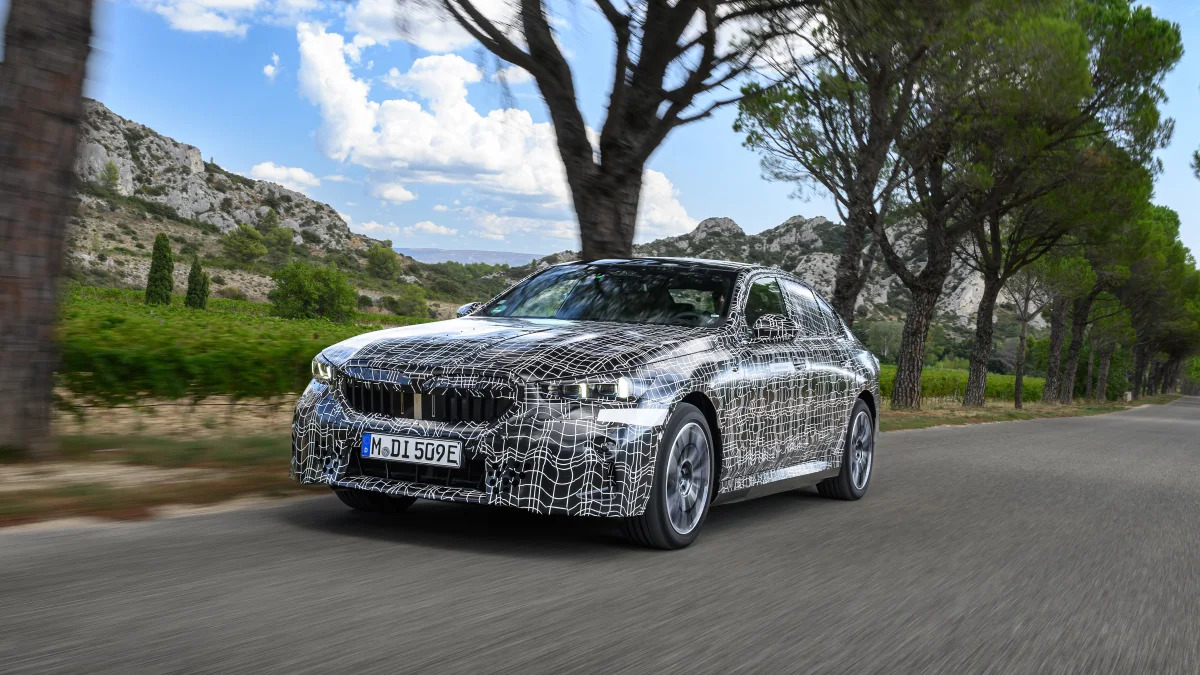









Sign in to post
Please sign in to leave a comment.
Continue